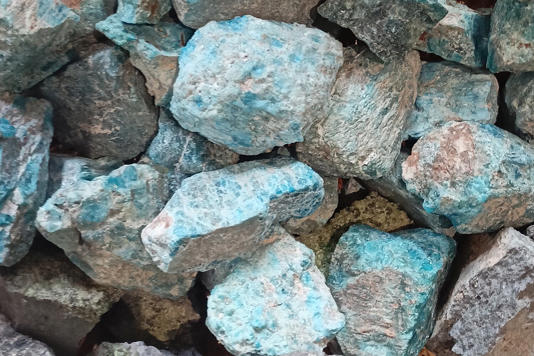Story by Science X staff via MSN
New process gets common rocks to trap carbon rapidly and cheaply
1 day ago
MSN
Olivine aérolie weathering naturally. Credit: Renhour48 via Wikimedia
Stanford University chemists have developed a practical, low-cost way to permanently remove atmospheric carbon dioxide, the main driver of global warming and climate change.
The new process uses heat to transform common minerals into materials that spontaneously pull carbon from the atmosphere and permanently sequester it. These reactive materials can be produced in conventional kilns, like those used to make cement.
“Earth has an inexhaustible supply of minerals that are capable of removing CO2 from the atmosphere, but they just don’t react fast enough on their own to counteract human greenhouse gas emissions,” said Matthew Kanan, a professor of chemistry in the Stanford School of Humanities and Sciences and senior author of the study in Nature. “Our work solves this problem in a way that we think is uniquely scalable.” . . . . .
Story by Science Daily (looks to be identical)
New process gets common rocks to trap carbon rapidly, cheaply
Feb 19 (also yesterday)
sciencedaily.com. . . . Enhanced weathering
In nature, common minerals called silicates react with water and atmospheric CO2 to form stable bicarbonate ions and solid carbonate minerals—a process known as weathering. However, this reaction can take hundreds to thousands of years to complete. Since the 1990s, scientists have been searching for ways to make rocks absorb carbon dioxide more rapidly through enhanced weathering techniques. . . .
The new approach was inspired by a centuries-old technique for making cement.
Cement production begins by converting limestone to calcium oxide in a kiln heated to about 1,400 degrees Celsius. The calcium oxide is then mixed with sand to produce a key ingredient in cement.
The Stanford team used a similar process in their laboratory furnace, but instead of sand, they combined calcium oxide with another mineral containing magnesium and silicate ions. When heated, the two minerals swapped ions and transformed into magnesium oxide and calcium silicate—two alkaline minerals that react quickly with acidic CO2 in the air. . . .
As a quick test of reactivity at room temperature, the calcium silicate and magnesium oxide were exposed to water and pure CO2. Within two hours, both materials had completely transformed into new carbonate minerals with carbon from CO2 trapped inside. . . .
“Each year, more than 400 million tons of mine tailings with suitable silicates are generated worldwide, providing a potentially large source of raw material,” Chen said. . . . .


